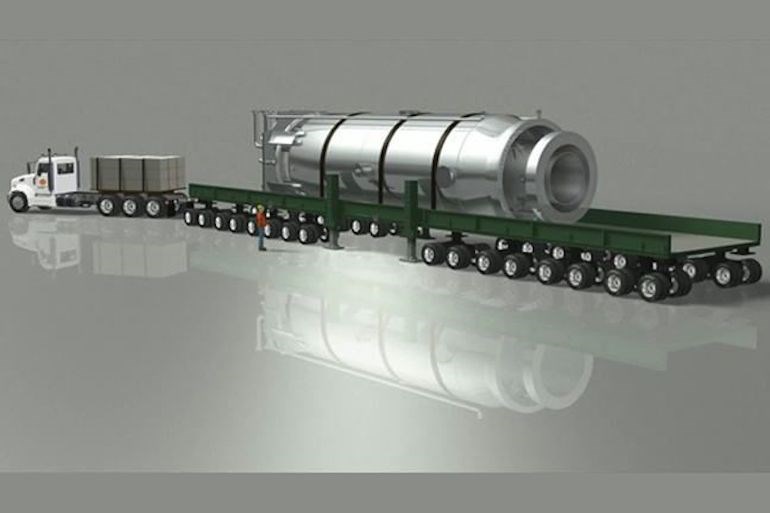A zero-emission, mobile unit the size of a pickup-truck that provides safe power for 45,000 homes seems like an environmental fantasy, but Saskatchewan is trying to prove its possible.
“Nuclear power from small modular reactors (SMRs) produces reliable power with zero greenhouse gas emissions. Right now, we don't have any nuclear power in the province. But we're looking into the potential to add it into our supply mix by the early 2030s,” reads a statement from the Saskatchewan government.
Saskatchewan has some of the world’s largest deposits of uranium, and ships it to clients around the world. Currently, about 15 per cent of Canada’s power comes from nuclear generation, but none is used west of the Ontario border. Ontario and New Brunswick produce nuclear energy from large reactors that are expensive to build and politically unpopular. Traditional nuclear reactors used in Canada generate about 800 megawatts of electricity, or about enough to power 600,000 homes at once (one megawatt can power about 750 homes).
British Columbia has long been declared a nuclear free-zone, while the Prairie provinces rely on traditional fossil fuels.
But last year Saskatchewan signed a Memorandum of Understanding with Ontario and New Brunswick that committed the provinces to work together to support the use of SMRs.
The key argument in favour of the new generation of SMRs is that they can provide non-emission power anywhere in Canada, safely. They can be hauled into remote communities or mining sites, for instance, and provide massive amounts of off-grid energy almost instantly.
Designs for small reactors ranging from 3 megawatts to 300 megawatts have been submitted to Canada's nuclear regulator, the Canadian Nuclear Safety Commission, for review as part of a pre-licensing process.
The apparent front runner in SMRs is a 60-megawatt NuScale Power Module developed by Oregon-based NuScale Power. A single NuScale module can provide enough power for 45,000 homes, and up to 12 units can be linked together to develop a plant that could power two cities the size of Saskatoon. Endorsed by the U.S. Department of Energy, a NuScale 12-module plant in Idaho is expected to be fully operational by 2027.
The smaller nuclear reactors could be especially beneficial for smaller jurisdictions because they are independent of the province's grid, are safe and produce energy 24-7 regardless of the weather conditions, according to experts.
"These reactors are designed to be inherently safe, which means that if something goes wrong, if the reactor heats up, the physics will shut down the reactor automatically," Esam Hussein, dean of engineering and applied science at the University of Regina, told CBC.
Still, convincing the public and regulators that small nuclear power is the potential future of energy remains a step ramp. Saskatchewan, Ontario and New Brunswick are hoping that the SMRs could be producing power sometime within the next two decades.



